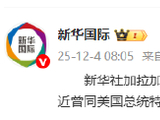China's Economic Developments and Policies
Recent discourse on China's economic trajectory reflects a blend of optimism and strategic recalibration in response to international pressures. Various reports, with People's Daily and RFI as primary sources, highlight these dynamics. Inside China, there's a consistent message of the resilience and adaptation capability of China's economy—even amidst external adversities such as tariffs imposed by then U.S. President Donald Trump. People’s Daily discourses emphasize the nation's robust 5% economic growth target, stressing China's institutional advantages, market potential, and enterprise vigor. The line of reassurance positions China’s economic flexibility and robustness as a cornerstone for global confidence.
However, external viewpoints from sources like RFI alongside reports from the Asian Policy Research Institute, suggest these adjustments are both economically necessitated and politically motivated—driving a reorientation towards domestic consumption and lessening reliance on external demand. This pivot reflects on China’s need for an economic strategy accommodating the complex international trade environment shaped critically by U.S.-China tensions.
Furthermore, People's Daily's coverage of the recent CPI and PPI data indicates a nuanced understanding of China's economic health. While CPI and PPI indices show degrees of fluctuation, underlying factors include seasonal variances and pricing adjustments in significant commodities like coal and oil, indicative of broader market adaptations to both global supply chain volatility and domestic adjustments.
The overarching intentions behind China's narratives remain clear: reinforcing a foundational narrative of stability, adaptability, and progress—even when externally pressured. Such stories aim to bolster domestic confidence while projecting international assurances of China’s economic path forward.
This economic narrative holds broad implications for the world at large as China's strategic pivots may influence global supply chain dynamics, international trade policies, and investment flows. These shifts not only reflect China’s adaptability but potentially set considerable examples for other economies facing similar global pressures.



